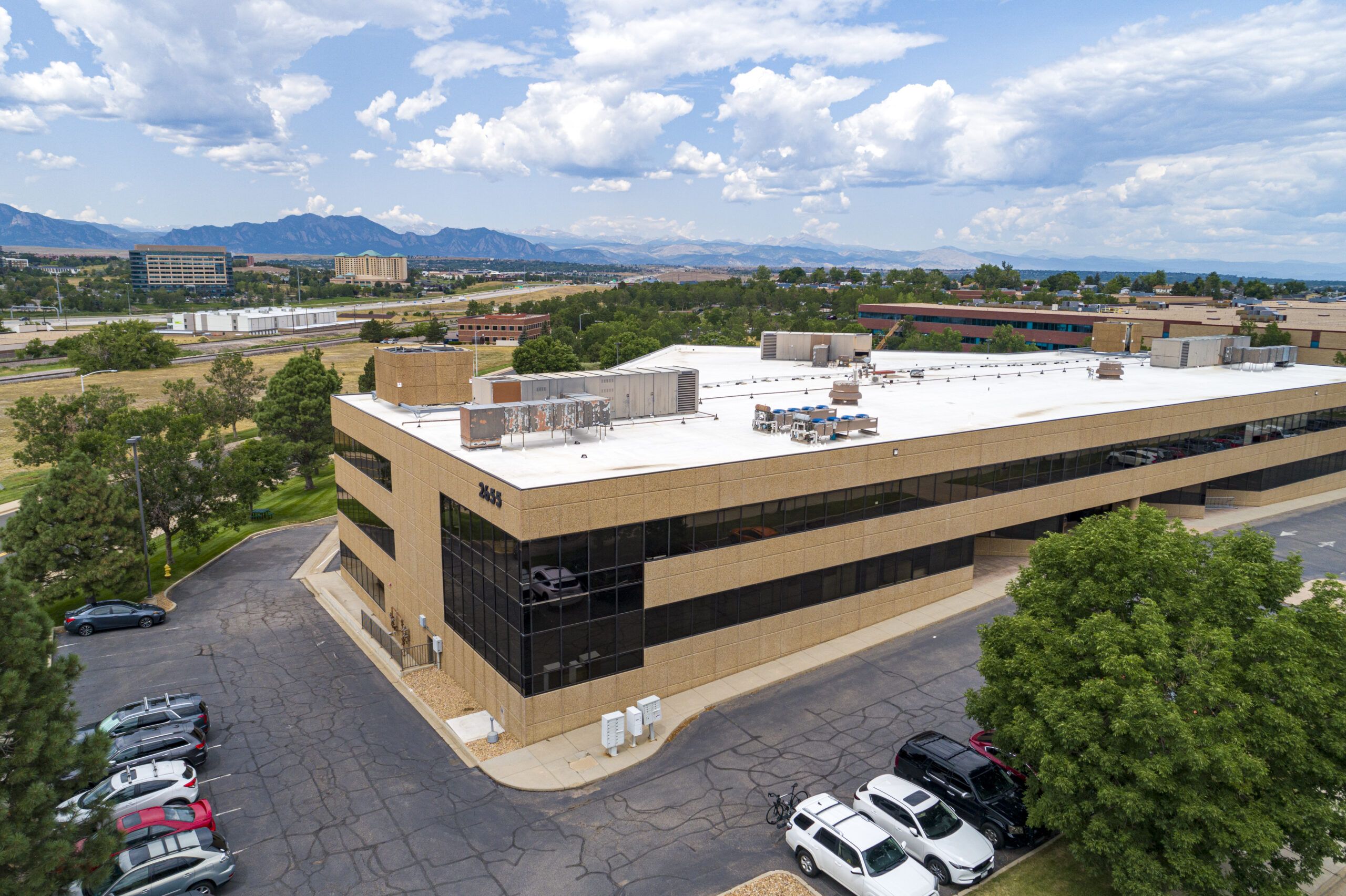Despite barriers, banks still open to office transactions

A drum that has been beaten to pieces over the past two years is the one signaling that the global pandemic had crushed the commercial real estate world’s office sector.
Countless stories have been written about the effects of office workers gathering their personals, heading for the parking lots, driving home to stay and checking in as needed via conference screen-time.
But lately that story has shifted its focus away from fingering the pandemic as the cause of all the market’s ills to acknowledgement that larger forces were at work to drive the plunge in demand for office space.
SPONSORED CONTENT
“There are more and more people who think that where we are now is where we were going to end up anyway,” said Mark Bradley, a veteran broker with Realtec Commercial Real Estate Services’ Greeley office. “The whole trend of working from home, needing less space — all of that would have happened regardless.”
Never mind the cause: The effects are real, and partly define the climate for buying, selling, leasing and lending in connection with office transactions. However, in downplaying “office flight” and tumbling demand as the biggest threats to the office sector, bankers say other factors emerge as being just as forceful.
“Banking is a risk-averse business by its very nature,” said Gerard Nalezny, CEO and chairman of Verus Bank in Fort Collins. In tallying the risk factors that stand as challenges for office transactions, he taps first on interest rates that have more than doubled in the past two years.
“We haven’t seen a change in interest rates this radical in our lifetimes,” he said. “The high interest rates are the root of a lot of interesting issues. The interest rate goes up, the cap rate goes up, and the values go down. That’s something that’s still being digested.”
In simplest terms, a property’s cap rate is the product of a formula that balances the costs of owning, say, an office building against the income that it generates. When costs of owning rise (as they have) and income falls (as it has) the cap rates spike, making loans on those properties less and less attractive to risk-wary banks.
Nevertheless, those facts of life for commercial real estate investors have not combined to stifle the markets in the Boulder Valley and Northern Colorado, but only to slow them down.
“Given all the negatives, it’s surprising how active the market really is,” Bradley said. “It’s not like 2008-2009 when things came to a complete standstill.”
Even in Boulder, where the office-flight phenomenon combined with a surplus of new office construction combined to drive vacancy rates above 30%, bankers and brokers see cause for optimism in the market despite the interest-rate headwinds.
“Most of the office landlords here are strong and have some staying power,” said Becky Gamble, CEO of venerated Boulder commercial brokerage Dean Callan & Co. Inc.
Gamble and other Boulder real estate and finance executives have watched the recent exodus of large-scale office employers — notably Twitter-now-X and Splunk, a data analysis software firm — with an eye toward opportunities to plug those gaps.
“Twitter and Splunk go away, but we have new companies coming in, and existing companies that want to expand,” Gamble said. “I think there are, collectively, enough really good things happening that we’re in pretty good shape.”
Her optimism is borne out by numbers that showed a big rebound in Boulder office property sales last year, with 16 transactions totaling $747.6 million. The price-per-square-foot of $593 was well over double the $303 statewide number for 2022.
Other observers say that those transaction numbers fail to take into account the over-supply of new office construction in Boulder and Boulder County that will have to be absorbed before vacancy rates drop out of the high 20s and market health is restored.
“Just as all politics is local, and all real estate is local,” Nalezny said. “If I own office buildings in Boulder, I’m nervous. If I own buildings in Fort Collins, it’s less of a problem.”
Bradley said that global economic factors likely combine to keep the lid on new office construction in Northern Colorado with construction costs rising to unprecedented levels.
“Labor costs, and supply-chain issues, have really driven the cost of construction,” Bradley said. “What used to cost $200 per square foot to build is now up to $300 or even $350. That’s way up, and one of the reasons that in Northern Colorado we still have lower vacancy rates.”
In fact, the vacancy rate in Northern Colorado could be even lower if not for a few cavernous holes that have yet to be filled.
“The rate is skewed by some big-footprint spaces,” Bradley said. “State Farm in Greeley, of course, and the departure of Heska in Loveland,” two properties that comprise about 300,000 vacant square feet.
Lenders and investors, in a healthier market, would both be active in resurrecting big, vacant properties such as those, Bradley said.
“On one hand, they’re a developer’s dream come true,” he said. With sale prices in the $30-$50 per-square-foot range, opportunities for financing would be easily at hand — in a “normal market,” Bradley said.
But banks are, as Nalezny said, risk-averse, making those transactions more difficult.
“They’re underwriting more carefully than they did in the past,” Bradley said. “Certain products are getting much closer looks than others. I would say office is right at the top of that list. Financing for those properties is going to require a really strong tenant base and some very deep pockets on the part of investors.”
A drum that has been beaten to pieces over the past two years is the one signaling that the global pandemic had crushed the commercial real estate world’s office sector.
Countless stories have been written about the effects of office workers gathering their personals, heading for the parking lots, driving home to stay and checking in as needed via conference screen-time.
But lately that story has shifted its focus away from fingering the pandemic as the cause of all the market’s ills to acknowledgement that larger forces were at work to drive the plunge in demand for office space.
“There are more and more…
THIS ARTICLE IS FOR SUBSCRIBERS ONLY
Continue reading for less than $3 per week!
Get a month of award-winning local business news, trends and insights
Access award-winning content today!




